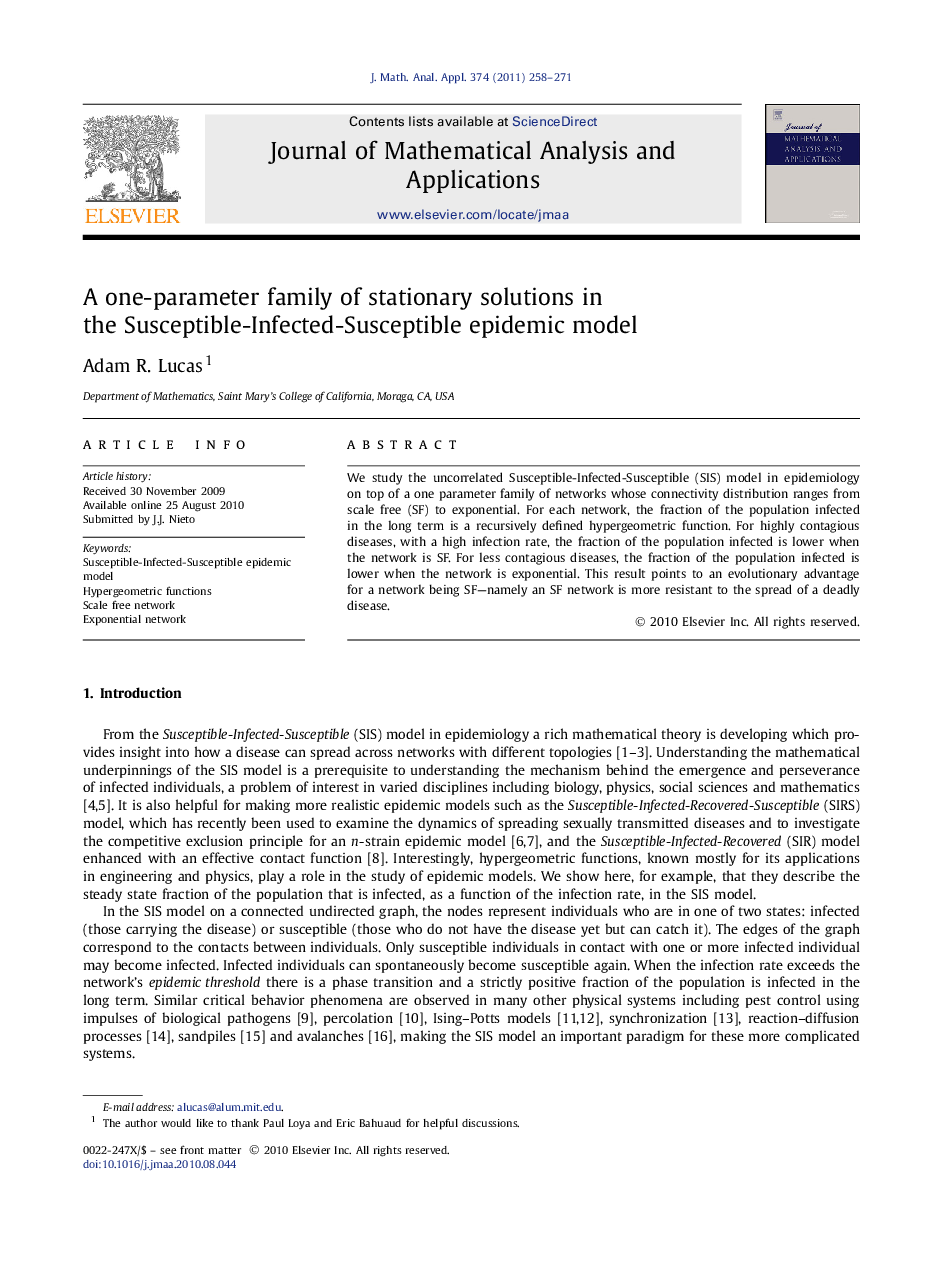| Article ID | Journal | Published Year | Pages | File Type |
|---|---|---|---|---|
| 4618792 | Journal of Mathematical Analysis and Applications | 2011 | 14 Pages |
Abstract
We study the uncorrelated Susceptible-Infected-Susceptible (SIS) model in epidemiology on top of a one parameter family of networks whose connectivity distribution ranges from scale free (SF) to exponential. For each network, the fraction of the population infected in the long term is a recursively defined hypergeometric function. For highly contagious diseases, with a high infection rate, the fraction of the population infected is lower when the network is SF. For less contagious diseases, the fraction of the population infected is lower when the network is exponential. This result points to an evolutionary advantage for a network being SF—namely an SF network is more resistant to the spread of a deadly disease.
Related Topics
Physical Sciences and Engineering
Mathematics
Analysis
